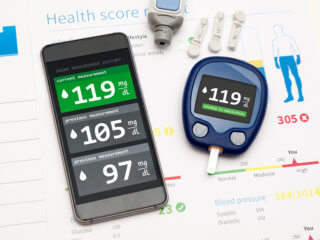Interoperability in eHealth systems is critical to delivering quality health care and reducing health care costs. 80-90% of the hospitals in the United States are electronically enabled. Around 60-70% of the mobile service providers make use of digital technology for health care services. European countries have felt the need of integrating technology and smooth exchange of data in health care among the member states.
Making use of the advanced digital technology for health care and exchanging data across the border will improve the quality of services being provided to the citizens. This will help the government set up an efficient and sustainable health care system.
Achieving interoperability in eHealth systems through a skilled workforce and patient-provider enabled systems
People belong to various age groups in need of health care. As the time passes and life expectancy increases, health care providers realize the need of storing electronic medical records. But, there are a lot of challenges plaguing the digital health care system such as no synchronization among different departments of an organization, decentralized medical records, and lack of communication between health care providers, patients, and other agencies.
Interoperability allows systems and devices to exchange the data in previously agreed upon structure and semantics. EU-US interoperability workgroup mobilized resources across the Atlantic to define the guidelines and meaning of the International Patient Summary (IPS) standard, and scope of the interoperability project which resulted in the publishing of white paper. US Office of the National Coordinator for Health IT expects to have a fully developed, working connected health system in place by 2021-2024.
| Recommended for you | |
| Fast Healthcare Interoperable Resources | |
| Interoperablity in digital health sector | |
| Role of policy in guiding digital health revolution |
Learning Health Care Systems consistently emphasize on a collaborative approach that shares data and insights across boundaries to drive better, more efficient medical practice and patient care. The key to this vision is the creation of systems linked by a common EHR and shared databases. It aims to instill the capacity and commitment to learning at all levels of the healthcare system with a focus on improving the system.
Financial limitations and interoperability issues are not the primary causes for concern in today’s medical technology industry. According to the annual survey of the Healthcare Information and Management Systems Society (HIMSS), a lack of qualified healthcare IT workers is the most significant challenge in digital health sector*. The results of the survey indicate that more than 20 percent of Chief Information Officers(CIOs) polled revealed a lack of skilled healthcare IT workers was their biggest worry, displacing financial restrictions for the first time in 10 years. Thus nurses, doctors, pharmacists, need to know how connected health works and how to facilitate and enable patients to exchange information through systems.
To address the lack of skilled eHealth workers, along with interoperability of those eHealth systems, the European Union and the United States formed a collaborative cooperation in 2010: The EU-US eHealth Cooperative Initiative. The goal of the EU*US eHealth Work project is to address this workforce shortage and lack of full access to eHealth skills and competence by measuring goals and needs, informing the users and spreading awareness about the use of devices, educating all the stakeholders and holding training sessions and promoting advancement and development in the field by making use of skilled workforce.
Interoperability and next steps for eHealth and mHealth in Europe
The cost of non-digital health care system in Europe is very high. According to some studies, EU could gain 4% of the GDP by stimulating the fast development of single digital market by 2020*. Numerous organizations are working together to achieve interoperability in the health sector in Europe. EHTEL maintain or support the multi-stakeholder networking platform e.g. in the form of conferences and information dissemination by bringing together all the organizations and individuals involved in health care. eHealth Action Plain 2012-2020 is aimed at fostering the cross-border exchange of health data and wider interoperability and analytics in the data.
The major objective of epSOSis to design, build and evaluate a service infrastructure that demonstrates cross-border interoperability between electronic health record systems in Europe. Starting guidelines of eHealth Network has been taken from the lessons learned from project epSOS, and JAseHN is the organization that overlooks all this work of preparing guidelines.
One of the primary objectives of the EC Antilope project was to deliver a refinement to the first version of the eHealth European Interoperability Framework, to extend and refine the set of tools provided by the framework. This framework provides, among other things, an overview of possibly relevant use cases and appropriate links to the existing and available profiles from the major international consortia in the area of standardization and interoperability. It led to the development of Refined eHealth European Interoperability Framework(ReEIF).
Three tools that were presented are a refined model for interoperability, a template for the description of high-level use cases, and a glossary of terms and definitions.
Using Electronic health records and shifting all the health care system to digital technology will substantially improve the health care infrastructure in various countries. eHealth systems could help the medical professionals save 30% of their time spent on analyzing and accessing information. A standard approach across all the EU countries will be needed to establish EU as a frontrunner in eHealth which will contribute to the well-being and health of its citizens.
Speakers:
Rachelle Blake PH MHA, EU-US-eHealth-Workforce Project Coordinator & CEO Omni Micro, US
Dr. Stephan Schug, ZTG GmbH and Chief Medical Officer, EHTEL, Brussels
Video URL: https://www.youtube.com/watch?v=8W90T4EiyKA&list=PL98iSagl_rnIwKONL-dQmj9Y1mOGAjvW8&index=36
Upload Date: 28th November 2016
Video code: 16G2043
*Source:http://healthinformatics.uic.edu/resources/articles/skilled-worker-shortage-a-primary-concern-for-many-healthcare-cios/
https://www.medetel.eu/download/2011/parallel_sessions/presentation/day1/Digital_Agenda.pdf
epSOS: http://www.epsos.eu/
JASeHN: http://jasehn.eu/
Image credit: www.istockphoto.com

















